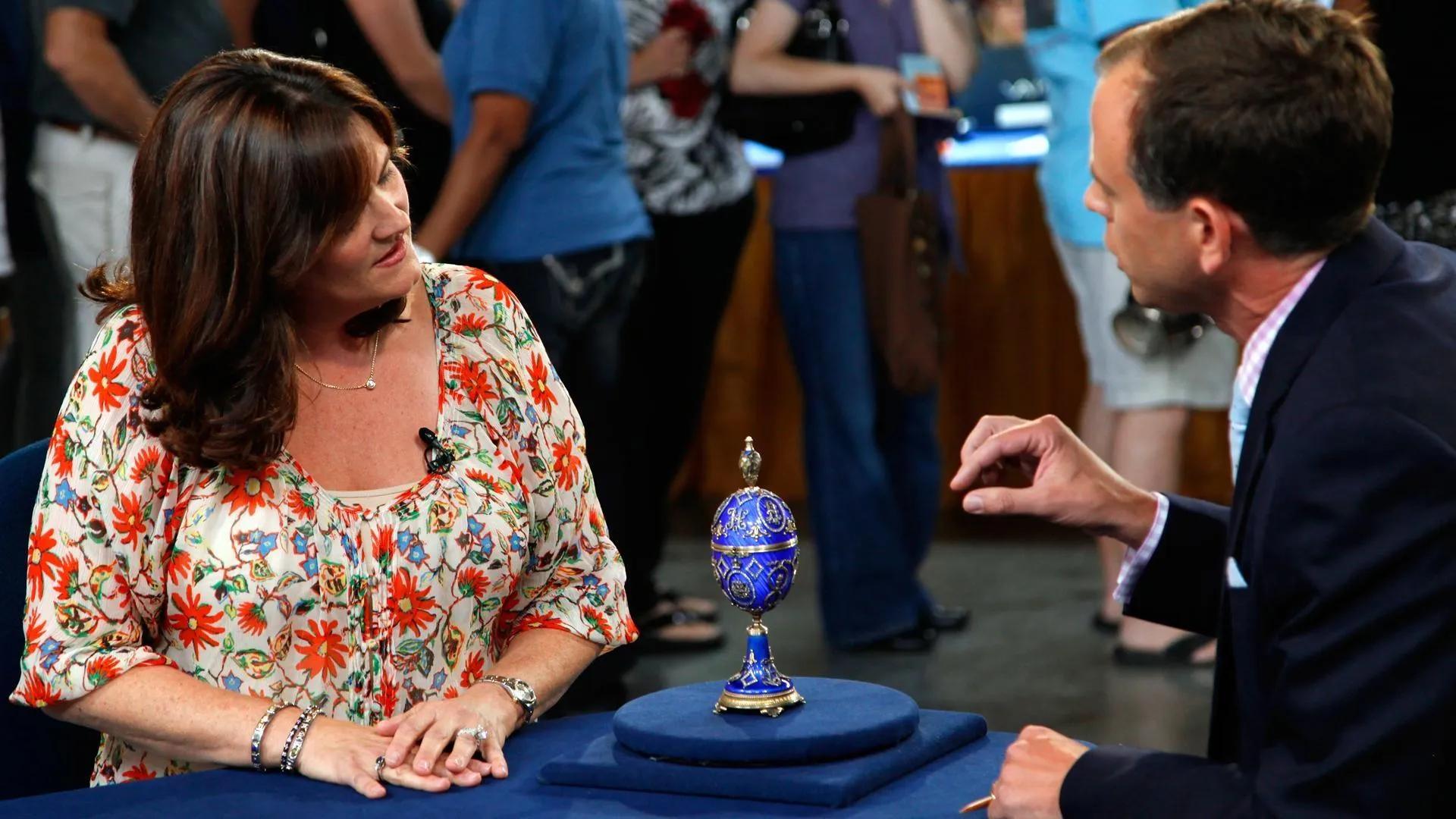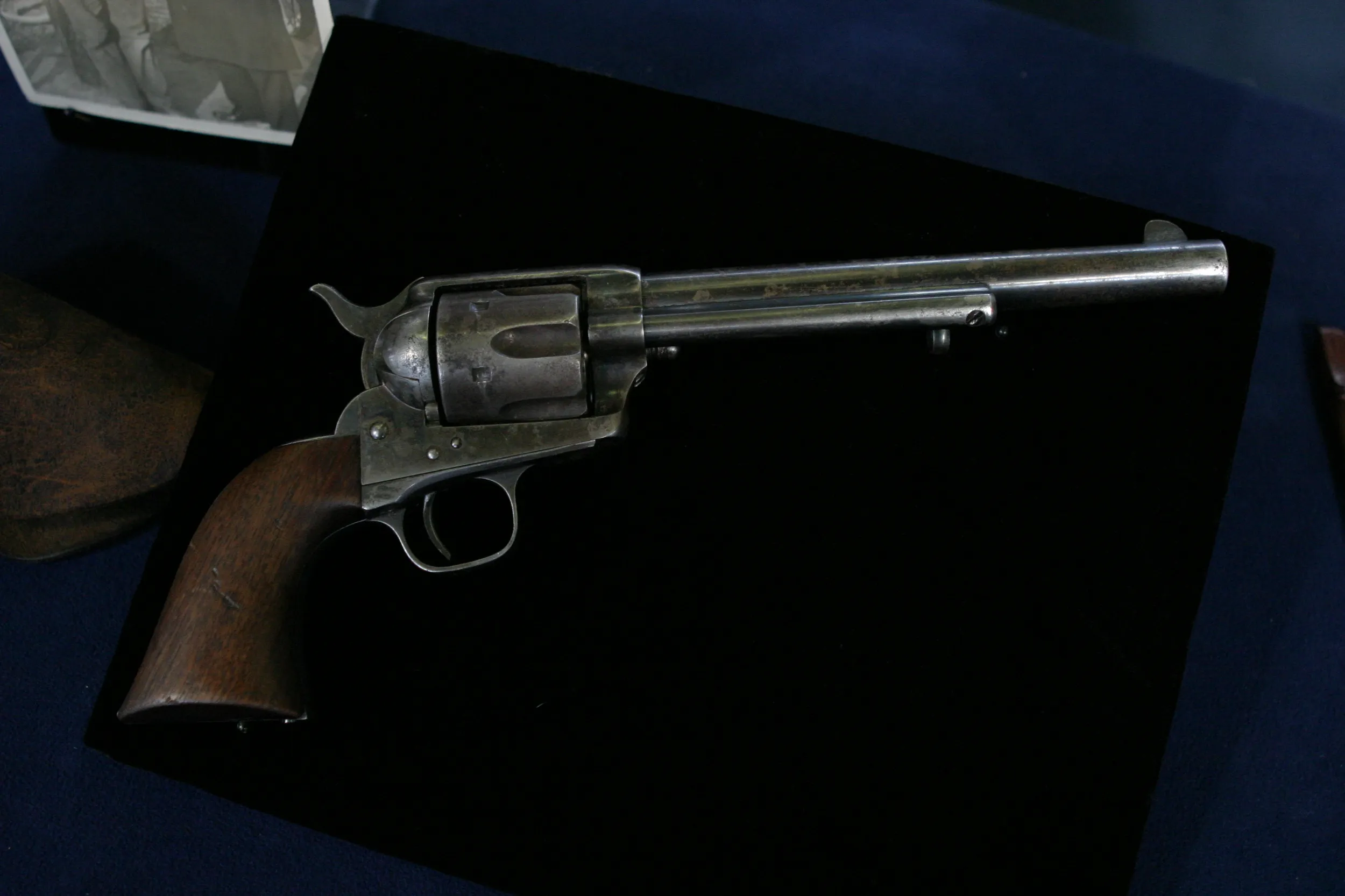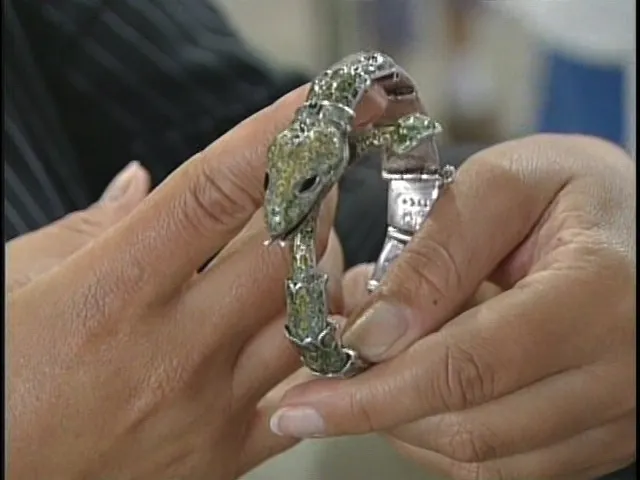GUEST: My great-grandfather and great-grandmother got married and they went on their honeymoon to New York. And while on their honeymoon, they went to the opera. And my great-grandmother admired this piece on one of the singers, and my great-grandfather went after the show and talked to the Tiffany jewelers and arranged to buy this piece for my great-grandmother.
APPRAISER: Do you know approximately what year that would have been?
GUEST: No, the only thing I can tell you is that my grandfather, their son, got married in 1902.
APPRAISER: I see. As you mentioned, the piece is by Tiffany & Company, and I would date this piece just around the mid-1870s. We have this beautiful necklace, with these graduated panels, and this applied wirework design motif. And in the mid-1870s, there's a style called archaeological revival, and in that period, twisted wirework and little bead work was very, very popular. And Tiffany picked up on this design motif that was coming in from Italy and Europe, and especially in 1876, there was the Centennial Exposition in Philadelphia, Tiffany exhibited there, and there was a lot of archaeological revival jewelry there. So it's very clear that they were influencing one another. The other aspect of the necklace is that Tiffany also started working what's called the Aesthetic Period, which had a Japanese influence to it, with the decorative motifs of these panels, how they're extending out, as if they are almost screens or Japanese panels as well.
GUEST: Mm, I see that.
APPRAISER: The other thing that's nice is that they've actually patented the alternating panels here to help give the piece dimension. And if we look around here on the back as well... We can see they also have a hook here. There would have probably been a locket associated with this piece, and the Tiffany signature is right here on the side. In terms of the gold karat value, I've not tested the piece, but usually in this category, these are 18-karat gold.
GUEST: Oh.
APPRAISER: The other thing that's important about this particular piece is that this is a transition period where Tiffany starts actually designing and making more of its jewelry, where previously, they were more of a vendor, where they were bringing items in for resale. Now, have you ever had the item appraised?
GUEST: Back in the '70s, a gentleman looked at it-- not from Tiffany's, but just a jeweler-- and he said that a depressed value would be $10,000, and that's what he would put on it.
APPRAISER: So he said the depressed value would be $10,000. I'm not really sure of that terminology in today's marketplace, but this is a wonderful piece, and I would expect that you would find this piece in a high-end store, somewhere in the $40,000 to $50,000 range in today's market.
GUEST: I don't think I'll be wearing it to any PTA meetings. (laughs) Thank you.











